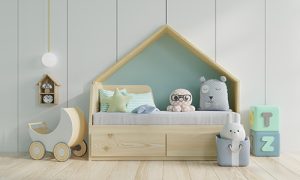
Maximize Your Equity
How do you walk away with the most amount of money possible when you sell your home? Here are tips to help you earn the maximum when you sell your home.
Downsizing can feel overwhelming when you look at your entire home at once, but breaking it down room by room makes the process much more manageable. Each space in your home serves a different purpose and holds a unique set of belongings, so each requires its own thoughtful approach.
The key is to tackle one room at a time, giving yourself permission to take breaks between rooms to process both the physical work and the emotional decisions that come with it. Remember, this isn’t about getting rid of everything—it’s about thoughtfully choosing what deserves space in your new chapter.
Your kitchen likely holds some of your most practical belongings, as well as some of the most sentimental. Start by honestly assessing your current cooking habits compared to what they were when you first acquired all these items.
If you rarely cook elaborate meals anymore, you don’t need multiple sets of cookware or that bread maker you haven’t touched in five years. Keep one high-quality set of pots and pans that you enjoy using, and let go of the duplicates and specialty items that no longer serve your lifestyle.
Look at your small appliances with fresh eyes. That food processor was essential when you were cooking for a family, but if you’re primarily preparing simple meals now, it might be taking up valuable counter space. Keep the appliances you use at least monthly, and don’t feel guilty about letting go of the ones that seemed like good ideas at the time.
Consider your entertaining needs realistically. If you typically have two people for dinner rather than twelve, you don’t need service for a crowd. Keep enough dishes and glassware for your actual gatherings, plus a few extras for unexpected guests.
Your spice collection deserves special attention. Spices lose potency over time, so this is a perfect opportunity to refresh your collection with small amounts of spices you use. If you haven’t reached for that exotic spice blend in two years, someone else might appreciate it more.
Your living room furniture needs to work in your new space both physically and emotionally. Measure your new living area carefully before making decisions—that large sectional sofa that anchored your family room might overwhelm a smaller space. At the same time, a loveseat and two chairs might create a more intimate conversation area.
Think about how you actually spend time in your living space now. If you primarily read and watch television, you need comfortable seating with good lighting and a view of the TV. If you enjoy hosting small gatherings, you might prioritize seating arrangements that encourage conversation.
Your entertainment setup should reflect your current media consumption. If you primarily watch streaming services on a tablet or laptop, you might not need that large entertainment center. On the other hand, if you have an extensive collection of books, music, or movies that you actively enjoy, make sure you have adequate storage in your new space.
Decorative items should pass the “joy test”—keep pieces that make you smile when you see them, and let go of items you display out of habit rather than genuine affection. Your new space will feel more personal with fewer pieces you truly love than with many items that feel obligatory.
Consolidating from multiple bedrooms to one or two requires careful thought about what makes you feel comfortable and at peace. Your bedroom furniture should prioritize function and comfort over matching sets or what you think you should have.
Choose your most comfortable mattress and favorite bedding, but consider your new temperature control situation. You may not need as many blankets, or you might need different weights depending on your new home’s heating and cooling system and whether you control the temperature or it’s centrally-controlled.
Approach your clothing with honesty and kindness. Keep pieces that fit well, make you feel confident, and work with your current lifestyle. If you’re moving to a warmer climate, those heavy winter coats might not be necessary. If your new community is more casual, you might not need as many formal outfits.
Consider your new laundry situation. If your community offers laundry services or you plan to do laundry more frequently, you can manage comfortably with fewer clothes overall. Focus on pieces that work well together and can be easily mixed and matched.
Your personal care items should reflect your current routines. We all accumulate beauty products and toiletries over time, but moving is a perfect opportunity to keep only what you use and enjoy.
Your home office setup should reflect your current work and communication needs, which may be different from what they were even a few years ago. As more services move online, many people find they need less physical filing space, but they may require a better technology setup to stay connected with family and friends.
Assess your paperwork honestly. With most bills and statements available online, you may not need extensive filing systems. Keep essential documents organized and accessible, but consider whether you really need to maintain years of old utility bills and bank statements.
Your technology needs may have evolved, too. If you primarily use a laptop or tablet for email and internet browsing, you might not need a full desktop computer setup. On the other hand, if staying connected with distant family through video calls is important to you, make sure you have a comfortable setup that encourages regular use.
Consider whether your new community offers business centers, libraries, or computer labs. If these services are available and convenient, you might be able to simplify your home office considerably.
Moving from multiple bathrooms to one or two, often with less storage space, requires some strategic thinking about your daily routines and personal care needs.
Focus on products you use regularly rather than backups or items you might use someday. Many people discover they’ve been storing expired medications or products they never actually liked but felt obligated to keep.
Keep a basic first aid kit, but remember that help may be more readily available in a community setting. You might not need to maintain the extensive medical supplies that you needed when you were more isolated.
Your towel and linen needs may be different, too. With potentially fewer bathrooms and different laundry arrangements, you might need fewer towels overall, but you’ll want to keep the ones that feel good and dry well.
Basements, attics, garages, and storage closets often hold the items we’re most reluctant to address, but they’re also where some of the easiest decisions you can make. These areas typically contain items that haven’t been used in years. If you haven’t needed something in the past two years and it’s not seasonal or emergency-related, you won’t miss it.
Holiday decorations deserve special consideration. Keep the decorations that genuinely bring you joy and fit your new space, but don’t feel obligated to maintain elaborate displays that no longer suit your lifestyle or energy level.
Evaluate tools and household maintenance items with your new living situation in mind. If you’re moving to a community with maintenance services, you won’t need extensive tools. Keep basic items for minor repairs and adjustments, but let go of equipment for major projects you’re unlikely to tackle.
Seasonal items, such as winter coats, summer gear, or sports equipment, should be evaluated based on your new location and interests. Moving to a warmer climate? Those ski boots can find a new home with someone who will put them to good use.
Every room contains items with emotional significance, and these often require the most thoughtful consideration. The key is distinguishing between items that truly spark connection and joy versus those you’re keeping out of guilt or obligation.
Consider creative solutions for preserving memories without keeping every physical item. Photograph collections, artwork, or room arrangements that hold special meaning. Create digital archives of family documents and letters. Some people find peace in keeping one or two pieces from a larger collection that represent the whole.
For items with family significance, reach out to relatives early in the process. They may treasure something you assumed they wouldn’t want, or they may help you understand that it’s okay to let certain items go to new homes where they’ll be appreciated.
Remember that this process doesn’t have to be completed all at once. Give yourself permission to tackle one room thoroughly before moving to the next, and take breaks when you need them. Some rooms may be easier than others, and that’s perfectly normal.
Completing each room will give you confidence for the next one and help you refine your decision-making process. You’ll start to develop a better sense of what questions to ask yourself and what criteria matter most for your new life.
The goal isn’t to achieve a perfect, minimalist aesthetic but to create a new home filled with items that support and enhance your daily life. When you’re surrounded by belongings that serve a purpose or bring you joy, your new space will feel both functional and welcoming—exactly what home should be.

How do you walk away with the most amount of money possible when you sell your home? Here are tips to help you earn the maximum when you sell your home.

The National Association of REALTORS® has released fresh data revealing how home staging influences today’s real estate market – and the results show staging remains a powerful tool, though perhaps not as universally transformative as some might expect.

While the excitement of selling your home is undeniable, smart sellers know that understanding the various costs involved is crucial for accurate financial planning and realistic expectations.
A Practical Guide to Tackling Every Space